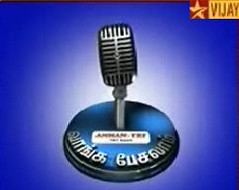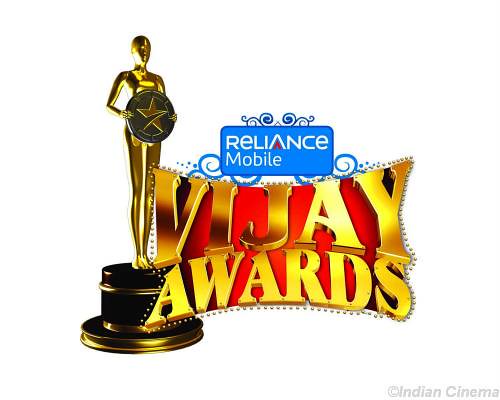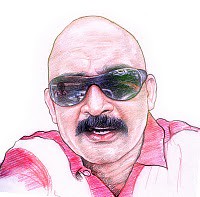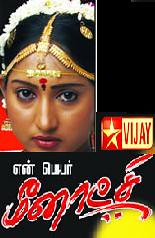27 ATN CHANNELS LAUNCH ON BELL FIBE TV
Asian Television Network International Limited (ATN) (TSX-SAT), Canada's largest South Asian broadcaster and Canada's largest distributor of World Class Cricket, is pleased to announce that the new BELL IPTV Network is now carrying 27 channels operated by ATN. Canada's largest communications company, Bell Canada, held an official launch of Fibe TV this week. It offers Internet subscribers advanced Internet-protocol television (IPTV) in several Toronto and Montreal neighbourhoods using the latest fibre optic technology on Bell Canada's high speed fibre network. The Bell service is expected to reach nearly five million homes by 2015.
"We congratulate Bell for launching a new platform which complements the reliability of old media with the exciting possibilities of the new media," said ATN's President & CEO Dr. Shan Chandrasekar at Fibe's star-studded gala launch, admiring Fibe TV's advanced recording, on-demand and search capabilities. "We are grateful to Bell that Canadians who have been unable to access ATN services by other distribution means will now be able to subscribe to our world-class multicultural news, entertainment and sports programming," Dr. Chandrasekar added.
Fibe TV is offering ATN's flagship service, ATN, which carries compelling Canadian programs, the best of Trail Blazers Zee TV, and Star Plus programming, as well as all other outstanding services offered by ATN to Canada's South Asian community, including: SET (Sony Entertainment Television) and Star India One (both Hindi general interest channels); four Bollywood Hindi Movie Channels such as B4U, Zee Cinema , SET Max and Star India Gold ; four Punjabi channels namely Alpha ETC, Jus Punjabi, MH1, and Punjabi TV ; ATN-Jaya TV and Vijay TV (in Tamil); ARY Digital (Urdu); CBN and Cricket Plus (sports including live cricket coverage); NDTV Good Times (South Asian lifestyle); Aastha (spiritual); ATN-B4U Music; two news channels, NDTV 24x7 and Star India News; ATN Bangla and SONY Aath (both Bengali); and ATN Malayalam.
ATN's Chinese offerings, Star Chinese Channel, Star Chinese Movies, and CHANNEL [V] Taiwan are also available on Fibe TV. The Fibe TV service includes a whole-home video recording feature that enables subscribers to view, set, delete and manage up hundreds of hours of programs from any receiver in the home -- even pause a recorded show in one room and pick it up in another - and record up to four programs simultaneously. These features are especially exciting for ATN subscribers given the large number and variety of television channels ATN offers.
Bell is investing billions of dollars in its fibre, satellite and wireless broadband networks with a goal of becoming Canada's largest TV provider by 2015. Fibe TV complements the Bell TV satellite service, which already delivers HD television content to almost two million customers across Canada. For more information on Fibe TV, including areas of availability and pricing, please visit the Bell Canada website. In addition to 28 television channels, ATN operates ATN Asian Radio on XM 159, the only satellite radio channel serving United States and Canada's South Asian Diaspora. ATN video content is also available on any Bell mobile phone that supports video. ATN has programming alliances with leading international broadcasters. To subscribe to ATN and for more details about our services and programming schedules please visit www.asiantelevision.com.
Courtesy - Newswire.ca
Saturday, September 18, 2010
Friday, September 17, 2010
Booming: Television News Channels in India
News programmes have suddenly become hot property and are vying for attention with other popular programmes telecast in different channels. All major television broadcasters are including at least one news channel to their bouquet. The biggest headache for launching a satellite channel is programme software for round the clock. In this juncture, newsgathering is a major task for the 24-hour news channels. To cater this task, the emerging electronic channels have always made an attempt to cover all the incidents irrespective of position, location and time. These channels not only revolutionized the concept of news on Indian television but also changed the news formats. Before 1990s, Doordarshan had monopolized newscast on Indian television and also turned the news programs into a dowdy exercise. Now the private channels made the news an essential commodity like food, cloth and shelter. The strong point of all today’s news bulletins is their topicality, objectivity, glossy editing and high-quality visuals. News has traveled a long way from the DD era. From Local events to International events, breaking news to news analysis, television soap to page3 news, every happening comes under purview of news. In this article, we have covered some significant changes in news broadcasting in India before and after the Gulf War.
Indian Television – Flash Back
Television in India is undergoing significant changes in the current liberalized environment. To understand these changes, one needs to have some brief idea of the road covered by the television channels so far. The journey started as an experimental basis with a financial grant from UNESCO in 15th September 1959. The makeshift studio at Akashvani Bhavan in New Delhi was chosen for location of the experiment. The experiment started with one-hour program, broadcast twice a week, on community health, citizen rights, education and traffic sense etc. As far as news is concerned, it was launched exactly six years after the inception of television broadcasting. Daily one-hour program with a news bulletin was served to the Indian viewers. But one major drawback of television was that you could not enjoy the original colour of the objects because of black and white transmission. First multi-color programme was the Prime Minister’s address to the nation from Red Fort in Delhi on India’s 35th Independence Day. In the same day, DD National channel was launched. The aim of launching the National channel is nurturing national integration, and inculcating a sense of pride in Indians. Indian viewers also enjoyed the colored version of the Asian Games hosted by New Delhi in their drawing room. The coverage of major events and different occasions lend a big hand behind the infiltration of television signals to the nook and corners of the subcontinent. Indian Government had taken all possible steps to expand the television broadcasting demographically and geographically. In 1983 television signals were available to just 28% of the population, this had doubled by the end of 1985 and by 1990 over 90% of the population had access to television signals. In 1984, DD Metro channel was added to provide an exclusive entertainment for the urban viewers. In the beginning, this channel was confined to metropolitan cities.
As a public broadcaster, Doordarshan presented the news in naturalized manner. All controversial issues were pushed under the carpet. The ruling government had a strong hold on the television broadcasting. Doordarshan news bulletins were unable to provide the international news to the national viewers. Objectivity had been the first casualty as news was invariably slanted to suit the party in power. The news was liberated from the confines of the DD newsroom and gained in objectivity and credibility when New Delhi Television (NDTV) produced ‘The World This Week’ in 1988. Everyone was waiting for the Friday night to watch ‘The World This Week’. This was the only India-based programme, which looked out at the rest of the world. The World This Week was the best current affairs programme on the international scenario and carried good stuff of news, which the regular DD news was failed to carry out. This program is ranked as one of the country’s finest and most popular television shows. In 1989, NDTV produces India’s first live televised coverage of the country’s general elections. The critical and commercial success of the coverage sets a new standard for Indian television. After the Gulf War the media panorama has changed forever.
Golf War – The Catalyst
Post-1990 satellite television in India has become transnational in nature. It coincided with the entry of multinational companies in the Indian markets under the Government policy of privatization. International satellite television was introduced in India by CNN through its coverage of the Gulf War in 1991. In August 1991, Richard Li launched Star Plus, the first satellite channel beamed the signal to Indian subcontinent. Subhash Chandra’s Zee TV appeared in October 1992. It is India’s first privately owned Hindi channel to cater the interest of Indian viewers. This ignition followed by Sony and a little later by domestic channels such as Eenadu, Asianet and Sun TV. Entertainment programs had begun to occupy center stage in the organization’s programming strategies and advertising had come to be main source of funding. Doordarshan’s earlier mandate to aid in the process of social and economic development had clearly been diluted. Doordarshan had faced a stiff competition in news and public affairs programming with international channels like BBC and CNN. Doordarshan planned to sell some slots for news programme under sponsored category. In February 1995, NDTV becomes the country’s first private producer of the national news ‘News Tonight’, which aired on the country’s government-owned Doordarshan set a new landmark for Indian television because of its on-the-spot reporting with pertinent visuals. In the same year, TV Today Network occupied a 20 minutes slot in DD Metro channel and aired a Hindi and current affairs programme ‘Aaj Tak’. This programme became popular for its comprehensive coverage and unique style presentation by Late S. P. Singh. Still we remembered the sign-up message “Ye Thi Khabar Aaj Tak, Intizar. Kijiye Kal Tak”. Large number of viewers across India had been watching Aaj Tak as a daily habit because of its innovative style of news presentation. Besides that Nalini Singh’s five-minute fast paced, condensed daily news capsule Ankhon Dekhi, TV Today Network’s Business Aaj Tak and Newstrack was aired on the Metro channel of Doordarshan. This is the period when satellite channels concentrated on entertainment programmes for their respective channels. Doordarshan was still ruled the most wanted area ‘news’.
Major Players
Doordarshan’s monopoly was broken in 1992, when private television channels infiltrated into the Indian boundaries and entertain the viewers as much as possible. In the beginning of 1990s, the private channels offered only entertainment programmes. The entertainment programs include family drama, comedy serials, children programmes, cartoons, movies, talk shows, recipe shows, musical concerts, non-fiction programmes etc. Private entertainment channels added some infortainment programmes to their Fixed Point Charts (FPC). Keeping the demand of infotainment programmes in mind, the media houses started to produce news magazines, entertainment magazines and news programmes for different channels. India’s premier business and consumer news broadcaster and a leading media content provider, Television Eighteen India Limited (TV18) started India’s first ever entertainment magazine ‘The India Show’ on Star Plus in 1993. This emerging media powerhouse provided prime time television content to almost all leading satellite channels in India including BBC, Star Plus, Sony Entertainment Television, Zee, MTV and Discovery. After The India Show, TV18 produced a weekly business news program India Business Report for BBC World. Indian viewers had very limited options (like public service broadcaster Doordarshan, BBC and CNN) for watching the television news. For televised news, the viewers had to watch Dordarshan and some international news channels like BBC or CNN. In this race to provide more news, more information, Zee Television jumped into the battlefield by launching the news channel Zee News in 1995. This News and current affairs channel revolutionized the way news was delivered to the viewers. Since its inception Zee News has endeavoured to be the fastest to provide news, working towards a single goal of Sabse Pahle (Always First). The other round-the-clock news channel, the Murdoch-owned Star TV beamed its exclusively 24-hour news channels, Star News in 1998. Star made a contract of five year with Prannoy Roy-owned NDTV (New Delhi Television Company) to provide news content for this news channel.
The untiring exhaustive coverage of the Kargil war between India and Pakistan gained more publicity and attracted more viewers towards the electronic channel. This televised conflict also sets a news benchmark for wartime journalism. During the Kargil war, common citizens witnessed how their brave Jawans fought despite in hostile conditions and watched the war front live by the exclusively news channels, Star-TV and Zee-News. The live coverage of the battlefield helped to create a euphoria of patriotism among the Indian masses, which later facilitated into collecting huge funds for the welfare of the families of Kargil martyrs. Every news programme draws the attention of large number of viewers but Kargil war attracts private broadcasters to invest more money in the broadcasting business by launching a news channel. In November 1999, TV18 entered into a 49:51 joint venture with CNBC Asia to launch CNBC India. TV18 is the sole program provider to CNBC India, and produces 12 hours of local content per day on this 24-hour satellite channel.
After the huge success of news programme ‘Aaj Tak’, TV Today group launched a 24-hour Hindi news channel with the same name ‘Aaj Tak’, in December 2000, which covers India with insight, courage and plenty of local flavour. Within 11 months of its launch, Aaj Tak emerged as India’s number one news channel and was awarded Best News Channel award from Indian Television Academy Awards. Some mega events apart from regular interesting items (such as Kandhahar hijack, September 11 attacks, Afghanistan war, attack on Parliament, Iraq war, Godhra carnage and riots) have driven up the viewership. As time passed, NDTV’s five years contract with Star group for outsourcing of news and related programming expired on March 2003. With the expiry NDTV forayed into broadcasting business by simultaneously launching two 24-hour news channels; NDTV 24X7 – English news channel and NDTV India – Hindi news channel, which targets the Indian diaspora across the world. News crazy Indians received more news at faster speed from different channels. Any unusual happening can be caught by the television camera anywhere form Rastrapati Bhawan to bedroom. The power of TV journalism was become more visible by the major sting operations like Operation West End and Shakti Kapoor Case. This style of investigative journalism has brought about a change in the way we look at news, amidst new notions of editorial freedom. The world’s largest family ‘Sahara India Parivar’ launched a 24-hour national Hindi news channel, Sahara Samay, in March 28, 2003. It is the first ever city-centric satellite news channels covering 31 cities in India with their own city news bulletins. Keeping the demand of news in mind, the Union cabinet approved the proposal to convert the DD Metro to DD news in a meeting held on 3 October 2003. Consequent to these decisions, DD-News channel was launched on 3 November 2003. You might have noticed that the news channels are language specific. But DD’s news channel contains the round the clock news bulletins in Hindi/ English are also telecast twice a day on the National Network of DD National.
‘Aap Ki Adalat’ fame Rajat Sharma, Sohaib Ilyasi, the man behind the highly successful ‘India’s Most Wanted’ and Taun Tejpal, editor-in-chief of Tehelka roped together and launched a free-to-air Hindi news and current affairs channel India TV on May 20, 2004. Indian viewers had more expectations from this channel. The much-awaited news channel hopes to set itself apart from the existing ones by setting new benchmarks of responsible journalism. Speaking on the occasion of the launch, Rajat Sharma, chairman, India TV, said, “We aim to change the way broadcast news reporting is being conducted in the country. India TV will set new benchmarks by maintaining international standards of responsible and credible news reporting. We will stay away from graphic depictions of violence and sensationalism of news. We will uphold the viewer’s right to correct information and their right to truth and verity. India TV is not just a news channel, it is a movement.” NDTV as a pioneer in Indian television news, set to create a fresh revolution in high-quality business news with the launch of NDTV Profit. NDTV launched this 24-hour business channel on January 17th, 2005.
There is no saturation point in launching of news channel, just booming like sky as the limit. Entertainment channel to infotainment channel, infotainment channel to news channel, news channels to business channel and Business channel to lots more. Now the satellite channels become more topicality with international standard. When we are talking about topicality, CNBC TV18, the only business channel, continues to be the medium of choice for India’s decision makers, affluent audiences across the country since 1999. It has set the pace for the growth in number of television channels by launching a 24-hour consumer channel in Hindi called ‘ Awaaz’. This news channel focusses on empowering consumers on decision-making related to investment, saving and spending. All the programmes are catering to consumers across different walks of life, which included personal finance; variety of markets including commodity, stocks, savings etc.; small businesses; education & career guidance; and verticals like health, shopping etc.
Another news channel was finally launched into the already cluttered news space in Indian television. Jagran TV Pvt Limited’s news channel, Channel 7 up-linked to the air on 27 March 2005. The channel has been set up to cater to the vast Hindi-speaking audiences, already being targeted by a slew of news channels. Channel 7 developed every programme with a bid to cater to all types of audiences and not just pre-dominantly male audiences who get attracted towards news channels.
Regional Leaders
To cater the interest among the Indians, Doordarshan televises programmes in Hindi and associate Official languages. It has launched a number of Regional Language Satellite Channels (DD – 4 to DD – 11 and DD – 13) and telecast programmes in Assamese, Bengali, Gujarati, Malayalam, Marathi, Kannada, Telugu, Kashmiri, Oriya and Tamil. The Regional channels relayed by all terrestrial transmitters in the state and additional programmes in the Regional Language in prime time and non-prime time available only through cable operators. The Doordarshan regional satellite channels telecast major news programme with some entertainment programmes.
If you think about the private regional channels, they have followed the path of the Big brother (i.e Doordarshan). They are neither completely entertainment channel nor exclusively news channel. They are following the middle path and claiming themselves an infotainment channels. The private channels televise through the state dominant languages. Rising advertising revenues and increasing numbers of viewers have provided the impetus for many big players to enter into the business. Some regional media leaders like ETV, Sun TV, Asianet have a strong grip over the regional market. Some major players tried their luck in different states. Zee television has three regional channels; Zee Marathi, Zee Punjabi and Zee Bangla. Star Network entered into Tamilnadu by launching Star Vijay, one of the most popular entertainment channels in India broadcasting in Tamil. Besides that ETV Network is a part of the well-established Ramoji Group, has created 12 dedicated infotainment regional channels. ETV network is the source of rich entertainment of eight different languages. Those are: Telugu, Bangla, Marathi, Kannada, Oriya, Gujarati, Urdu; and Hindi to viewers in Uttar Pradesh, Rajasthan, Bihar and Madhya Pradesh. Every ETV Network channel focuses exclusively on its audience’s unique cultural identity, its aspirations and its distinct socio-political character. Let us think about the south Indian language Telugu, there are around twelve satellite channels are roaming around the sky with different taste and different flavour. These channels include three news channels, one song-based channels and rest are infotainment channels. When we confine ourselves into news, three channels (ETV2, TV 9 and Teja News) exclusively devoted to news programmes.
Sahara India Pariwar is proud to have five news channels as the bouquet of Sahara Samay. These channels are: Sahara Samay NCR, Sahara Samay Mumbai, Sahara Samay Bihar & Jharkhand, Sahara Samay Madhya Pradesh & Chattisgarh, and Sahara Samay Uttar Pradesh & Uttranchal. Sahara Samay has already managed to gain a loyal audience in India through a bouquet of National & Regional News Channels since its launch. These channels are youthful and vibrant channels targeting students and women, besides that hardcore news stuff. The regional news channels covers the entire spectrum of genre with specific programs on lifestyle, fashion, food, shopping, health and fitness, sports, education, career and city issues, besides giving user-friendly information on traffic updates, city events, train and air timings, etc. Now national news channels cannot confine its boundary to national level. They cannot ignore the regional news because of the stiff competition form the regional cannels. Regional news channels are entering into the competition with a strong will power and also with an aim to portrait regional issues in national and international level.
Conclusion
Now the television industry becomes more specific. In this competitive market, channels are targeting specific viewers. News channels attract more viewers beyond their target by producing interactive and interesting programmes. Every channel needs to do an extensive research on different concepts and different themes to attract more viewers and in the same time more advertisers. After all, advertisements are the bread and butter for the channels. With increased consumer preference for news programmes, television news channels have grown faster than other niche channels. News channels are booming just like sky as the limit. Those days are not far away, when we will get satellite news channel for every major city in India. Staying in abroad, we can update ourselves about all the happening of our hometown. Now news is not restricted to political happenings. It will be extended its limit to every unwanted and hided corners of the society. At last we can reach in the conclusion that anything, which is strange or disgusting, is news. There are no rigid rules, which defines news.
Content Source : thainews.com
Indian Television – Flash Back
Television in India is undergoing significant changes in the current liberalized environment. To understand these changes, one needs to have some brief idea of the road covered by the television channels so far. The journey started as an experimental basis with a financial grant from UNESCO in 15th September 1959. The makeshift studio at Akashvani Bhavan in New Delhi was chosen for location of the experiment. The experiment started with one-hour program, broadcast twice a week, on community health, citizen rights, education and traffic sense etc. As far as news is concerned, it was launched exactly six years after the inception of television broadcasting. Daily one-hour program with a news bulletin was served to the Indian viewers. But one major drawback of television was that you could not enjoy the original colour of the objects because of black and white transmission. First multi-color programme was the Prime Minister’s address to the nation from Red Fort in Delhi on India’s 35th Independence Day. In the same day, DD National channel was launched. The aim of launching the National channel is nurturing national integration, and inculcating a sense of pride in Indians. Indian viewers also enjoyed the colored version of the Asian Games hosted by New Delhi in their drawing room. The coverage of major events and different occasions lend a big hand behind the infiltration of television signals to the nook and corners of the subcontinent. Indian Government had taken all possible steps to expand the television broadcasting demographically and geographically. In 1983 television signals were available to just 28% of the population, this had doubled by the end of 1985 and by 1990 over 90% of the population had access to television signals. In 1984, DD Metro channel was added to provide an exclusive entertainment for the urban viewers. In the beginning, this channel was confined to metropolitan cities.
As a public broadcaster, Doordarshan presented the news in naturalized manner. All controversial issues were pushed under the carpet. The ruling government had a strong hold on the television broadcasting. Doordarshan news bulletins were unable to provide the international news to the national viewers. Objectivity had been the first casualty as news was invariably slanted to suit the party in power. The news was liberated from the confines of the DD newsroom and gained in objectivity and credibility when New Delhi Television (NDTV) produced ‘The World This Week’ in 1988. Everyone was waiting for the Friday night to watch ‘The World This Week’. This was the only India-based programme, which looked out at the rest of the world. The World This Week was the best current affairs programme on the international scenario and carried good stuff of news, which the regular DD news was failed to carry out. This program is ranked as one of the country’s finest and most popular television shows. In 1989, NDTV produces India’s first live televised coverage of the country’s general elections. The critical and commercial success of the coverage sets a new standard for Indian television. After the Gulf War the media panorama has changed forever.
Golf War – The Catalyst
Post-1990 satellite television in India has become transnational in nature. It coincided with the entry of multinational companies in the Indian markets under the Government policy of privatization. International satellite television was introduced in India by CNN through its coverage of the Gulf War in 1991. In August 1991, Richard Li launched Star Plus, the first satellite channel beamed the signal to Indian subcontinent. Subhash Chandra’s Zee TV appeared in October 1992. It is India’s first privately owned Hindi channel to cater the interest of Indian viewers. This ignition followed by Sony and a little later by domestic channels such as Eenadu, Asianet and Sun TV. Entertainment programs had begun to occupy center stage in the organization’s programming strategies and advertising had come to be main source of funding. Doordarshan’s earlier mandate to aid in the process of social and economic development had clearly been diluted. Doordarshan had faced a stiff competition in news and public affairs programming with international channels like BBC and CNN. Doordarshan planned to sell some slots for news programme under sponsored category. In February 1995, NDTV becomes the country’s first private producer of the national news ‘News Tonight’, which aired on the country’s government-owned Doordarshan set a new landmark for Indian television because of its on-the-spot reporting with pertinent visuals. In the same year, TV Today Network occupied a 20 minutes slot in DD Metro channel and aired a Hindi and current affairs programme ‘Aaj Tak’. This programme became popular for its comprehensive coverage and unique style presentation by Late S. P. Singh. Still we remembered the sign-up message “Ye Thi Khabar Aaj Tak, Intizar. Kijiye Kal Tak”. Large number of viewers across India had been watching Aaj Tak as a daily habit because of its innovative style of news presentation. Besides that Nalini Singh’s five-minute fast paced, condensed daily news capsule Ankhon Dekhi, TV Today Network’s Business Aaj Tak and Newstrack was aired on the Metro channel of Doordarshan. This is the period when satellite channels concentrated on entertainment programmes for their respective channels. Doordarshan was still ruled the most wanted area ‘news’.
Major Players
Doordarshan’s monopoly was broken in 1992, when private television channels infiltrated into the Indian boundaries and entertain the viewers as much as possible. In the beginning of 1990s, the private channels offered only entertainment programmes. The entertainment programs include family drama, comedy serials, children programmes, cartoons, movies, talk shows, recipe shows, musical concerts, non-fiction programmes etc. Private entertainment channels added some infortainment programmes to their Fixed Point Charts (FPC). Keeping the demand of infotainment programmes in mind, the media houses started to produce news magazines, entertainment magazines and news programmes for different channels. India’s premier business and consumer news broadcaster and a leading media content provider, Television Eighteen India Limited (TV18) started India’s first ever entertainment magazine ‘The India Show’ on Star Plus in 1993. This emerging media powerhouse provided prime time television content to almost all leading satellite channels in India including BBC, Star Plus, Sony Entertainment Television, Zee, MTV and Discovery. After The India Show, TV18 produced a weekly business news program India Business Report for BBC World. Indian viewers had very limited options (like public service broadcaster Doordarshan, BBC and CNN) for watching the television news. For televised news, the viewers had to watch Dordarshan and some international news channels like BBC or CNN. In this race to provide more news, more information, Zee Television jumped into the battlefield by launching the news channel Zee News in 1995. This News and current affairs channel revolutionized the way news was delivered to the viewers. Since its inception Zee News has endeavoured to be the fastest to provide news, working towards a single goal of Sabse Pahle (Always First). The other round-the-clock news channel, the Murdoch-owned Star TV beamed its exclusively 24-hour news channels, Star News in 1998. Star made a contract of five year with Prannoy Roy-owned NDTV (New Delhi Television Company) to provide news content for this news channel.
The untiring exhaustive coverage of the Kargil war between India and Pakistan gained more publicity and attracted more viewers towards the electronic channel. This televised conflict also sets a news benchmark for wartime journalism. During the Kargil war, common citizens witnessed how their brave Jawans fought despite in hostile conditions and watched the war front live by the exclusively news channels, Star-TV and Zee-News. The live coverage of the battlefield helped to create a euphoria of patriotism among the Indian masses, which later facilitated into collecting huge funds for the welfare of the families of Kargil martyrs. Every news programme draws the attention of large number of viewers but Kargil war attracts private broadcasters to invest more money in the broadcasting business by launching a news channel. In November 1999, TV18 entered into a 49:51 joint venture with CNBC Asia to launch CNBC India. TV18 is the sole program provider to CNBC India, and produces 12 hours of local content per day on this 24-hour satellite channel.
After the huge success of news programme ‘Aaj Tak’, TV Today group launched a 24-hour Hindi news channel with the same name ‘Aaj Tak’, in December 2000, which covers India with insight, courage and plenty of local flavour. Within 11 months of its launch, Aaj Tak emerged as India’s number one news channel and was awarded Best News Channel award from Indian Television Academy Awards. Some mega events apart from regular interesting items (such as Kandhahar hijack, September 11 attacks, Afghanistan war, attack on Parliament, Iraq war, Godhra carnage and riots) have driven up the viewership. As time passed, NDTV’s five years contract with Star group for outsourcing of news and related programming expired on March 2003. With the expiry NDTV forayed into broadcasting business by simultaneously launching two 24-hour news channels; NDTV 24X7 – English news channel and NDTV India – Hindi news channel, which targets the Indian diaspora across the world. News crazy Indians received more news at faster speed from different channels. Any unusual happening can be caught by the television camera anywhere form Rastrapati Bhawan to bedroom. The power of TV journalism was become more visible by the major sting operations like Operation West End and Shakti Kapoor Case. This style of investigative journalism has brought about a change in the way we look at news, amidst new notions of editorial freedom. The world’s largest family ‘Sahara India Parivar’ launched a 24-hour national Hindi news channel, Sahara Samay, in March 28, 2003. It is the first ever city-centric satellite news channels covering 31 cities in India with their own city news bulletins. Keeping the demand of news in mind, the Union cabinet approved the proposal to convert the DD Metro to DD news in a meeting held on 3 October 2003. Consequent to these decisions, DD-News channel was launched on 3 November 2003. You might have noticed that the news channels are language specific. But DD’s news channel contains the round the clock news bulletins in Hindi/ English are also telecast twice a day on the National Network of DD National.
‘Aap Ki Adalat’ fame Rajat Sharma, Sohaib Ilyasi, the man behind the highly successful ‘India’s Most Wanted’ and Taun Tejpal, editor-in-chief of Tehelka roped together and launched a free-to-air Hindi news and current affairs channel India TV on May 20, 2004. Indian viewers had more expectations from this channel. The much-awaited news channel hopes to set itself apart from the existing ones by setting new benchmarks of responsible journalism. Speaking on the occasion of the launch, Rajat Sharma, chairman, India TV, said, “We aim to change the way broadcast news reporting is being conducted in the country. India TV will set new benchmarks by maintaining international standards of responsible and credible news reporting. We will stay away from graphic depictions of violence and sensationalism of news. We will uphold the viewer’s right to correct information and their right to truth and verity. India TV is not just a news channel, it is a movement.” NDTV as a pioneer in Indian television news, set to create a fresh revolution in high-quality business news with the launch of NDTV Profit. NDTV launched this 24-hour business channel on January 17th, 2005.
There is no saturation point in launching of news channel, just booming like sky as the limit. Entertainment channel to infotainment channel, infotainment channel to news channel, news channels to business channel and Business channel to lots more. Now the satellite channels become more topicality with international standard. When we are talking about topicality, CNBC TV18, the only business channel, continues to be the medium of choice for India’s decision makers, affluent audiences across the country since 1999. It has set the pace for the growth in number of television channels by launching a 24-hour consumer channel in Hindi called ‘ Awaaz’. This news channel focusses on empowering consumers on decision-making related to investment, saving and spending. All the programmes are catering to consumers across different walks of life, which included personal finance; variety of markets including commodity, stocks, savings etc.; small businesses; education & career guidance; and verticals like health, shopping etc.
Another news channel was finally launched into the already cluttered news space in Indian television. Jagran TV Pvt Limited’s news channel, Channel 7 up-linked to the air on 27 March 2005. The channel has been set up to cater to the vast Hindi-speaking audiences, already being targeted by a slew of news channels. Channel 7 developed every programme with a bid to cater to all types of audiences and not just pre-dominantly male audiences who get attracted towards news channels.
Regional Leaders
To cater the interest among the Indians, Doordarshan televises programmes in Hindi and associate Official languages. It has launched a number of Regional Language Satellite Channels (DD – 4 to DD – 11 and DD – 13) and telecast programmes in Assamese, Bengali, Gujarati, Malayalam, Marathi, Kannada, Telugu, Kashmiri, Oriya and Tamil. The Regional channels relayed by all terrestrial transmitters in the state and additional programmes in the Regional Language in prime time and non-prime time available only through cable operators. The Doordarshan regional satellite channels telecast major news programme with some entertainment programmes.
If you think about the private regional channels, they have followed the path of the Big brother (i.e Doordarshan). They are neither completely entertainment channel nor exclusively news channel. They are following the middle path and claiming themselves an infotainment channels. The private channels televise through the state dominant languages. Rising advertising revenues and increasing numbers of viewers have provided the impetus for many big players to enter into the business. Some regional media leaders like ETV, Sun TV, Asianet have a strong grip over the regional market. Some major players tried their luck in different states. Zee television has three regional channels; Zee Marathi, Zee Punjabi and Zee Bangla. Star Network entered into Tamilnadu by launching Star Vijay, one of the most popular entertainment channels in India broadcasting in Tamil. Besides that ETV Network is a part of the well-established Ramoji Group, has created 12 dedicated infotainment regional channels. ETV network is the source of rich entertainment of eight different languages. Those are: Telugu, Bangla, Marathi, Kannada, Oriya, Gujarati, Urdu; and Hindi to viewers in Uttar Pradesh, Rajasthan, Bihar and Madhya Pradesh. Every ETV Network channel focuses exclusively on its audience’s unique cultural identity, its aspirations and its distinct socio-political character. Let us think about the south Indian language Telugu, there are around twelve satellite channels are roaming around the sky with different taste and different flavour. These channels include three news channels, one song-based channels and rest are infotainment channels. When we confine ourselves into news, three channels (ETV2, TV 9 and Teja News) exclusively devoted to news programmes.
Sahara India Pariwar is proud to have five news channels as the bouquet of Sahara Samay. These channels are: Sahara Samay NCR, Sahara Samay Mumbai, Sahara Samay Bihar & Jharkhand, Sahara Samay Madhya Pradesh & Chattisgarh, and Sahara Samay Uttar Pradesh & Uttranchal. Sahara Samay has already managed to gain a loyal audience in India through a bouquet of National & Regional News Channels since its launch. These channels are youthful and vibrant channels targeting students and women, besides that hardcore news stuff. The regional news channels covers the entire spectrum of genre with specific programs on lifestyle, fashion, food, shopping, health and fitness, sports, education, career and city issues, besides giving user-friendly information on traffic updates, city events, train and air timings, etc. Now national news channels cannot confine its boundary to national level. They cannot ignore the regional news because of the stiff competition form the regional cannels. Regional news channels are entering into the competition with a strong will power and also with an aim to portrait regional issues in national and international level.
Conclusion
Now the television industry becomes more specific. In this competitive market, channels are targeting specific viewers. News channels attract more viewers beyond their target by producing interactive and interesting programmes. Every channel needs to do an extensive research on different concepts and different themes to attract more viewers and in the same time more advertisers. After all, advertisements are the bread and butter for the channels. With increased consumer preference for news programmes, television news channels have grown faster than other niche channels. News channels are booming just like sky as the limit. Those days are not far away, when we will get satellite news channel for every major city in India. Staying in abroad, we can update ourselves about all the happening of our hometown. Now news is not restricted to political happenings. It will be extended its limit to every unwanted and hided corners of the society. At last we can reach in the conclusion that anything, which is strange or disgusting, is news. There are no rigid rules, which defines news.
Content Source : thainews.com
Neeya Naana Gopinath Apologizes to Vijay Fans
'Neeya Naana' Gopinath on Sunday apologized for 'hurting the feelings of Vijay Fans' on the Aug 29th Neeya naana episode where a participant expressed her views on Vijay acting in films lacking proper storyline, or has the same storyline or are remade films from other languages(Araccha Maave Araikathinga). These statement had made Vijay supporters angry and the fans had expressed their anger through blogs and mails to Vijay TV office in Chennai.
The incident went to the extent, that the angry fans of the star had started making hundreds of abusive calls to Kamaraj, the executive producer of Mercury Networks, which produces 'Neeya Naana' , "My inbox has been flooded with hundreds of derogatory messages, threatening me with dire consequences," Kamaraj says. Apparently, Kamaraj's number was shared on the actors active community on the popular networking site, Orkut for this purpose. "The fans can't take an alternate view about their star," grieves Kamaraj, who hopes for respite from marauding fans.
Now after the emotional outburst of Vijay’s fans on blogs and the internet forums, Gopinath on behalf of Vijay TV has apologized just before taking off the Sep 5, Neeya Naana Show. Speaking to the viewers, Gopinath said, "Neeya Naana is a user participated show which brings out many social issues on stage, and participants express his/her opinions freely. Sometimes when the participant share his/her views, opinions and counter-arguments emotionally, there are chances that statements made by the participant may hurt the feelings or sentiments of somebody else. Unfortunately a participant's comment about actor Vijay in the recently telecasted episode hurt the feelings or the sentiments of the actors fans. We sincerely convey our apologizes for the comments made as our program is a genuine, neutralized and unbiased.
Actor Vijay has been given his contribution in all the big endeavours of Star Vijay. He has honored Vijay TV by participating in various Vijay TV programmes.I assure you all again, Neeya Naana is not does have any intention to hurt any one personally. Likewise, many of the audiences have conveyed their regrets as few 'Neeya Naana' programmes have hurt their religious beliefs and Thali sentiments. In a program,where participants are free to express their views and opinions, it is inevitable that words coming out of frustration and emotion might hurt others. However Vijay TV apologizes for the statements made and will be rectifying these issues in the future". It is worth mentioning that Vijay TV had earlier apologized to actor Vijay for teasing the actor in a lollusabha programme (Pokkiri as Bakery).
The incident went to the extent, that the angry fans of the star had started making hundreds of abusive calls to Kamaraj, the executive producer of Mercury Networks, which produces 'Neeya Naana' , "My inbox has been flooded with hundreds of derogatory messages, threatening me with dire consequences," Kamaraj says. Apparently, Kamaraj's number was shared on the actors active community on the popular networking site, Orkut for this purpose. "The fans can't take an alternate view about their star," grieves Kamaraj, who hopes for respite from marauding fans.
Now after the emotional outburst of Vijay’s fans on blogs and the internet forums, Gopinath on behalf of Vijay TV has apologized just before taking off the Sep 5, Neeya Naana Show. Speaking to the viewers, Gopinath said, "Neeya Naana is a user participated show which brings out many social issues on stage, and participants express his/her opinions freely. Sometimes when the participant share his/her views, opinions and counter-arguments emotionally, there are chances that statements made by the participant may hurt the feelings or sentiments of somebody else. Unfortunately a participant's comment about actor Vijay in the recently telecasted episode hurt the feelings or the sentiments of the actors fans. We sincerely convey our apologizes for the comments made as our program is a genuine, neutralized and unbiased.
Actor Vijay has been given his contribution in all the big endeavours of Star Vijay. He has honored Vijay TV by participating in various Vijay TV programmes.I assure you all again, Neeya Naana is not does have any intention to hurt any one personally. Likewise, many of the audiences have conveyed their regrets as few 'Neeya Naana' programmes have hurt their religious beliefs and Thali sentiments. In a program,where participants are free to express their views and opinions, it is inevitable that words coming out of frustration and emotion might hurt others. However Vijay TV apologizes for the statements made and will be rectifying these issues in the future". It is worth mentioning that Vijay TV had earlier apologized to actor Vijay for teasing the actor in a lollusabha programme (Pokkiri as Bakery).
Wednesday, September 15, 2010
Tata Sky offers STB for Rs 999
Further signaling a price war within the Indian DTH industry, Tata Sky has announced a new offer wherein it is offering its set-top-box (STB) just for Rs 999. The company said that this “first-of-its-kind, no conditions apply” offer will redefine the DTH landscape in the country. The STBs will be available across the country.
Tata Sky chief marketing officer Vikram Mehra said, “The key hallmark of Tata Sky is to offer significant value to our subscribers with a host of unique value-added initiatives. We were the first to break the rupee 100 price barrier in packaging, first to introduce HD service at an unimaginable price point and now, the first to provide a world-class quality DTH service at an affordable price point. With our hardware priced at Rs 999, our service will now be affordable for consumers across all strata of the society.”
Tata Sky currently offers a blend of over 191 channels ranging from news and entertainment to kid’s entertainment, music and sports. It also offers a host of innovative customer centric interactive services under the brand name, Actve. The company claims a subscriber base of 5.5 million across India.
-Indiantelevision.com
Tata Sky chief marketing officer Vikram Mehra said, “The key hallmark of Tata Sky is to offer significant value to our subscribers with a host of unique value-added initiatives. We were the first to break the rupee 100 price barrier in packaging, first to introduce HD service at an unimaginable price point and now, the first to provide a world-class quality DTH service at an affordable price point. With our hardware priced at Rs 999, our service will now be affordable for consumers across all strata of the society.”
Tata Sky currently offers a blend of over 191 channels ranging from news and entertainment to kid’s entertainment, music and sports. It also offers a host of innovative customer centric interactive services under the brand name, Actve. The company claims a subscriber base of 5.5 million across India.
-Indiantelevision.com
Monday, September 13, 2010
Whats in game show ‘Kadhal Meter’
Vijay TV has launched a new gameshow, Kadhal Meter (Love Meter), that will air every Friday and Saturday at 10 pm.
The channel has roped in Ideal Cookware & Appliances as the title sponsor. Kadal Meter gives the viewers an opportunity to get up close and personal with celebrity couples and get to know their compatibility quotient. It is a game show comprising celebrity couples from the television industry, mainly from South India.
Two couples compete with each other testing their compatibility with their respective partners. Each couple will be taken down the memory lane to recollect the golden days of their past. The questions will be asked based on their family members and friends and those unforgettable moments in life.
During the first round, each of the duo that forms a couple will be individually asked the same set of questions while the other partner is isolated in a soundproof room. The answers that match will win the couple points. Other rounds include ‘surprise guest’, ‘attitude round’ and ‘photo recollect’ round.
There are prize winners all the way. The couple with the maximum points get to win Rs 40,000 worth modular kitchen and the runner up gets Rs 20,000 worth gift voucher.
The game show is being hosted by actor Suresh who has acted in more than 265 Tamil, Telugu, Kannada and Malayalam films.
The episodes airing on 17 and 18 September will showcase Vijay TV’s ‘Jodi No. 1’ anchor Deepak and his wife Sivaranjani and Tamil film and television
‘comedy couple’ Ganeshkar and Arthi.
The channel has roped in Ideal Cookware & Appliances as the title sponsor. Kadal Meter gives the viewers an opportunity to get up close and personal with celebrity couples and get to know their compatibility quotient. It is a game show comprising celebrity couples from the television industry, mainly from South India.
Two couples compete with each other testing their compatibility with their respective partners. Each couple will be taken down the memory lane to recollect the golden days of their past. The questions will be asked based on their family members and friends and those unforgettable moments in life.
During the first round, each of the duo that forms a couple will be individually asked the same set of questions while the other partner is isolated in a soundproof room. The answers that match will win the couple points. Other rounds include ‘surprise guest’, ‘attitude round’ and ‘photo recollect’ round.
There are prize winners all the way. The couple with the maximum points get to win Rs 40,000 worth modular kitchen and the runner up gets Rs 20,000 worth gift voucher.
The game show is being hosted by actor Suresh who has acted in more than 265 Tamil, Telugu, Kannada and Malayalam films.
The episodes airing on 17 and 18 September will showcase Vijay TV’s ‘Jodi No. 1’ anchor Deepak and his wife Sivaranjani and Tamil film and television
‘comedy couple’ Ganeshkar and Arthi.
Subscribe to:
Comments (Atom)



